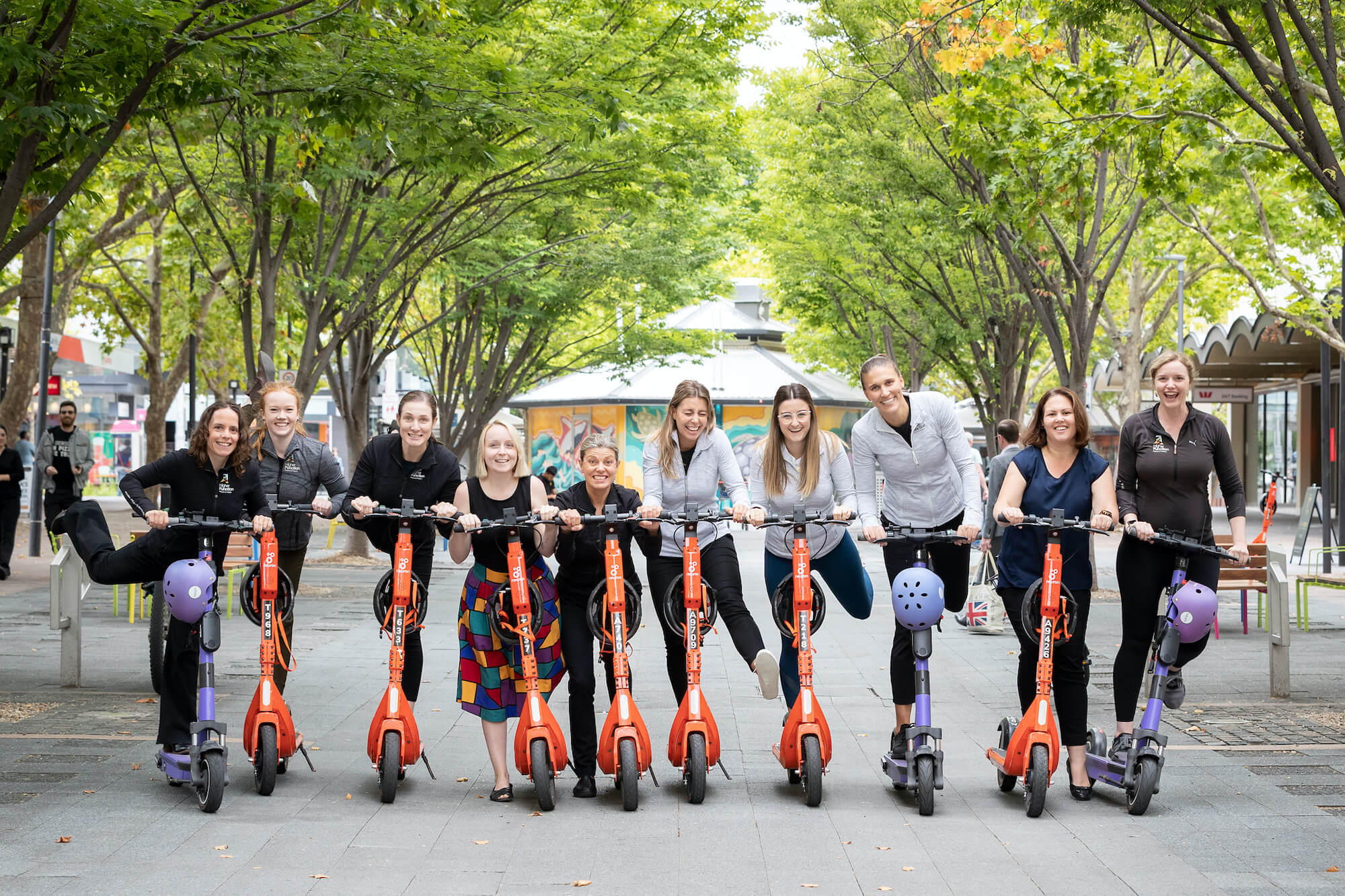Georgia Ferguson – Exercise Physiologist
Every 4 minutes someone in Australia is diagnosed with cancer 1.
1 in 2 Australians will be diagnosed with cancer by the age of 85 years 2.
Only 1 in 10 of those diagnosed will exercise enough during and after their treatment 1.
How many would benefit from exercise throughout their cancer journey? EVERY. SINGLE. ONE.
When I was telling a client about some of the positive and life changing effects that exercising throughout and after cancer treatment can have on a person, he said to me “why isn’t this headlining news articles and on the TV every night!? This is amazing!” .
Well, I might be biased but I must agree with him. If everyone who was diagnosed with cancer knew of these transformative effects, I’m positive that more than 1 in 10 patients will be hitting their exercise quota…
In 2018, the Clinical Oncology Society of Australia (COSA) released a position statement stating that “exercise should be embedded as part of standard practice in cancer care and to be viewed as an adjunct therapy that helps counteract the adverse effects of cancer and its treatment”5 .
Cancer and its associated treatments (chemotherapy, radiation, surgery/s, hormone therapy etc.) can cause serious health issues that compromise physical and mental health and well being. Exercise provides such widespread benefits to people with cancer because it is a therapy that improves the structure and function of most of the body’s systems simultaneously. In fact, there is no medication or treatment that can positively influence as many body systems as exercise can.
Exercise and Cancer Mortality
Research indicates that exercise offers a protective effect against cancer-specific mortality, cancer recurrence and all-cause mortality in some cancers. Data from more than 35 observational studies show that patients who exercise regularly have a 21–35% lower relative risk of cancer recurrence, a 28–44% reduced relative risk of cancer-specific mortality and a 25–48% decreased relative risk of all-cause mortality when compared with patients who do little or no exercise 3.
*It is noted that these statistics are mostly based on patients with breast, colorectal or prostate cancer. *

Figure 1: Exercise offers a protective effect against cancer recurrence, cancer-specific mortality and all-cause mortality in some cancers 3
Exercise and Cancer-Related Symptomology
As seen in the image below, exercise counteracts the physical deconditioning caused by cancer and its treatment. Exercise has been established as the most effective first-line treatment for cancer-related fatigue5, significantly reducing its presence and severity.
From my clinical experience, it is easy to say that most to all people living with cancer experience some level of cancer-related fatigue, which can be quite debilitating. When you are fatigued, it is common to think that resting is the solution and will improve your symptoms. This is not the case. An individualized exercise intervention from an Exercise Physiologist or Physiotherapist is your solution.

Figure 2: Exercise effectively counteracts the most common side effects of cancer and its treatment1
The below outlines many potential benefits that exercise can have on the body for someone living with cancer1-8.
✅ Reductions in…Treatment related side effects such as:
- Cancer-related fatigue (CRF)
-
- Chemotherapy induced peripheral neuropathy (CIPN) such as numbness and pins and needles in hands and/or feet
- Lymphoedema
- Nausea
- Muscle tightness, and joint stiffness
- Pain
- Symptoms of depression and anxiety (mental health)
- Duration of hospital admissions
- Risk of cancer re occurrence rate
- Risk of developing chronic health conditions such as heart disease and diabetes
- Rates of cardiotoxicity caused from chemotherapy
- Risk of developing co morbid conditions such as heart disease, hypertension, diabetes and osteoporosis
✅ Improvements in…
- Tolerating greater dosages of cancer treatment (potentially improving the treatment response)
- Muscular strength, endurance, and power
- Bone health (and to preserve)
- Balance and coordination with reduced falls risk
- Physical function and fitness
- Quality of life
- Capacity to perform everyday activities
- Mood and sense of control during and after treatment
- Sleep quality
- Body image, confidence and self-esteem
- Cognitive function (i.e. mitigate chemo-fog/chemo-brain)
- Tolerability and completion rates of treatment
- Body composition and weight management
- Immune function
- Sexual well being
As you can probably tell, the benefits are endless!
In Australia, Accredited Exercise Physiologists and Physiotherapists are recognized as the most appropriate health professionals to prescribe and deliver exercise programs to people with cancer.
Given that there are hundreds of different types of cancer, various stages and prognoses and many different treatment options (all of which cause a large variety of side effects), individualized and supervised exercise prescription is best practice.
Stay tuned for Exercise and Cancer Blog #2 to learn about HOW to introduce and/or maintain exercise during these challenging times so that you can get these amazing benefits!
References
- Cormie, P., Trevaskis, M., Thornton-Benko, E., & Zopf, E. M. (2020). Exercise medicine in cancer care. Australian Journal of General Practice, 5027.
- Australian Institute of Health and Welfare. Cancer in Australia 2019. Cancer series no.119. Cat. no. CAN 123. Canberra: AIHW, 2019.
- Cormie P, Zopf EM, Zhang X, Schmitz KH. The impact of exercise on cancer mortality, recurrence, and treatment-related adverse effects. Epidemiol Rev 2017;39(1):71–92. doi: 10.1093/epirev/mxx007.
- Ashcraft KA, Warner AB, Jones LW, Dewhirst MW. Exercise as adjunct therapy in cancer. Semin Radiat Oncol 2019;29(1):16–24. doi: 10.1016/j.semradonc.2018.10.001.
- Cormie P, Atkinson M, Bucci L, et al. Clinical Oncology Society of Australia position statement on exercise in cancer care. Med J Aust 2018;209(4):184–87. doi: 10.5694/mja18.00199.
- Hayes SC, Newton RU, Spence RR, Galvao DA. The exercise and sports science Australia position statement: Exercise medicine in cancer management. J Sci Med Sport 2019;22(11):1175–99. doi: 10.1016/j.jsams.2019.05.003.
- Mustian KM, Alfano CM, Heckler C, et al. Comparison of pharmaceutical, psychological, and exercise treatments for cancer-related fatigue: A meta-analysis. JAMA Oncol 2017;3(7):961–68. doi: 10.1001/jamaoncol.2016.6914.
- Fuller JT, Hartland MC, Maloney LT, Davison K. Therapeutic effects of aerobic and resistance exercises for cancer survivors: A systematic review of meta-analyses of clinical trials. Br J Sports Med 2018;52(20):1311. doi: 10.1136/bjsports-2017-098285.


